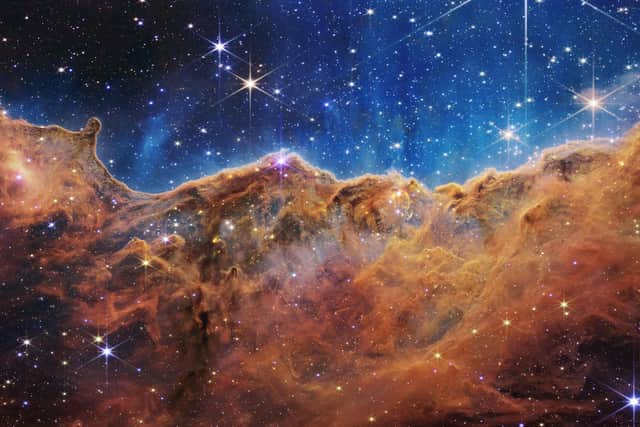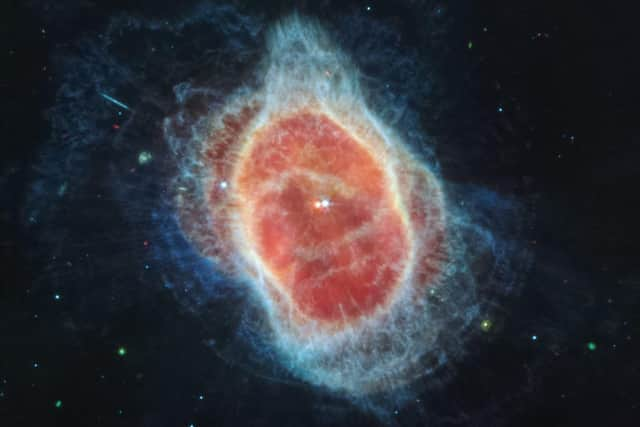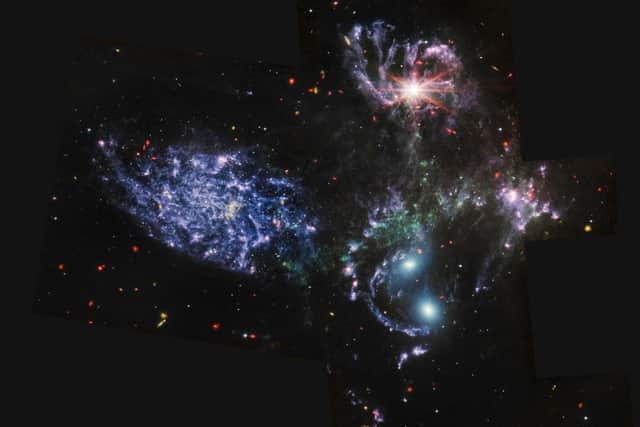The key Scottish link to stunning James Webb Space Telescope images
And the Scottish scientist at the heart of the design and build of the telescope which has delivered the stunning images for NASA has spoken of her “pleasure and honour” at being able to illuminate the universe like never before.
Professor Gillian Wright MBE, Director of the UK Astronomy Technology Centre at the Royal Observatory in Edinburgh, led the project to design the Mid-Infrared Instrument of the James Webb Space Telescope, the most powerful telescope ever to be launched into space.
Advertisement
Hide AdAdvertisement
Hide AdThe MIRI sees light in the mid-infrared region of the electromagnetic spectrum, where wavelengths are longer than our eyes can detect, with its results combined with those from several different instruments within the telescope.
Crucially, the telescope’s extreme sensitivity and capabilities to peer through cosmic dust has shed new light on how stars form after a landscape of glittering “mountains and valley” on the edge of the Carina Nebula – known as the NGC 3324 - was detected.
Previously, these areas of star birth were wholly invisible.
Professor Wright, European Principal Investigator for MIRI, said: “It is rare in science to make the revolution in capability that is provided for mid-infrared astronomy by MIRI on Webb.


"It is an honour and a pleasure to have led the MIRI team in this achievement, and first and foremost I would like to thank everyone who has contributed along the way to make this possible.”
The scientist, who was born in Hamilton, travelled from Scotland with colleagues from the UK Astronomy Technology Centre to the Space Telescope Science Institute in Baltimore, to monitor and command the MIRI and telescope in shifts, 24 hours a day.
Professor Wright added: “The amazing images are truly stunning and demonstrate the new and unique view of the Universe that MIRI provides. These images and spectra would not have been possible without the international collaboration between the many MIRI partners and stakeholders along with the fantastic work of the Webb team to build this powerful new observatory.
"With congratulations to all concerned, I am looking forward excitedly to the many discoveries that will come from MIRI.”


Advertisement
Hide AdAdvertisement
Hide AdThe MIRI has also revealed the cloak of dust around the second star at the center of the Southern Ring Nebula for the first time while exposing never-before-seen details of Stephans Quintet, a visual grouping of five galaxies.
The galaxy cluster SMACS 0723 as it appeared 4.6 billion years ago can also be viewed for the first time, with the MIRI image offering a kaleidoscope of colors while highlighting cosmic dust – a major ingredient for star formation, and ultimately life itself.
Webb launched on Christmas Day 2021 and then travelled 1 million miles to its new home among the stars, with its sunshield and mirrors unfolding on its month-long trip through the cosmos.
Professor Mark Thomson is executive chair of the Science and Technology Facilities Council (STFC), which leads on UK research and innovation in particle physics, space science and nuclear physics.


“When I think about what has been achieved here, peering into depths of space and time with this level of detail, it almost seems to be the stuff of science fiction. But the reality is that the hard work and imagination of our scientists, engineers and technician has got us to this point.”
Comments
Want to join the conversation? Please or to comment on this article.
